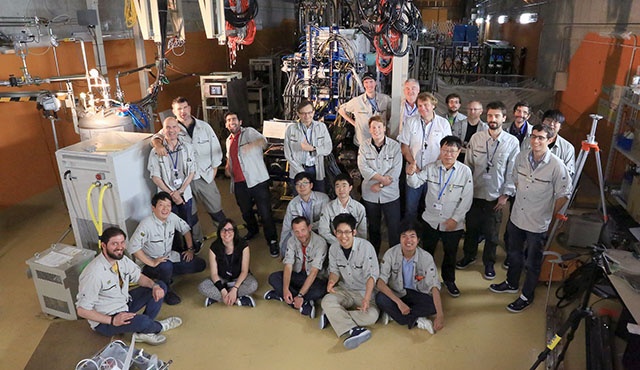BRIKEN begins to operate, the largest detector of its kind in the world whose design, construction and operation is headed by the Institute for Corpuscular Physics (IFIC, CSIC-UV). Its aim is to provide information to understand the formation of elements heavier than iron in the Universe. This process was recently demonstrated with the observation of the two neutron stars merger.
Knowing how chemical elements are formed in the Universe is one of the great issues of Physics that are still unresolved. The theories state that elements heavier than iron are created in cosmic cataclysms like supernovas or the neutron star mergers. However, this last scene was recently checked when observing, for the first time, the collision of two of these objects with a mass somewhat larger than that of the Sun but much more compact. At the present, an experiment has been launched in Japan to try to repeat the process in the laboratory, and thus provide data to understand how it is produced in the Universe. This is BRIKEN, a unique neutron detector of its kind whose design, construction and operation is led by a research group of the Institute for Corpuscular Physics (IFIC, CSIC-Universitat de València).
BRIKEN is an international collaboration consisting of 60 Researchers of 20 Scientifics institutions in Europe, America and Asia. Its spokesperson is José Luis Taín Enríquez, scientific researcher of the CSIC in the Institute for Corpuscular Physics. "The experiment objective is to obtain data that will help us understand the process of 'manufacturing' the chemical elements in the Universe," he explains. Specifically, from the elements heavier than iron, the last element of the periodic table that can be produced by nuclear fusion inside a star. From that point on, other environments are needed to explain how are produced rich elements in protons and neutrons.
One of them happens in the so-called “r-process of neutron capture” (the ‘r’ is for ‘rapid’). “In the r-process a series of capture of a neutron followed by a beta radioactive disintegration take place, giving room to elements ranging from iron to super heavy elements in a few seconds. The nucleus generated originally are very unstable, and they are disintegrated through the emissions of neutrons until producing the elements that surround us such as iodine, gold and uranium,” José Luis Taín described. According to Scientifics, the r-process contributes to create half of the chemical elements observed in the Solar System.
So far Scientifics assumed that this process took place in neutron-rich environments and in violent phenomenon such as the explosions of very massive stars that have exhausted their nuclear fuel (supernovas), either in mergers of neutron stars, or between a neutron star and a black hole. Last October, scientists from around the world announced the first detection of the collision of two neutron stars. This event was captured by several sources, both light and gravitational waves and even the neutrinos produced in the collision. This confirms a model proposed in 2010 by the Spanish physicist Gabriel Martínez-Pinedo (GSI, Germany) and Brian Metzger (Columbia University, USA) to explain the formation of elements heavier than iron.
Now, José Luis Taín and his research group of the Institute of Corpuscular Physics have just put into operation in the Nishina Center laboratory of the RIKEN research center, near Tokyo (Japan), a unique detector, the largest of its kind built in the world The experiment, so-called BRIKEN (Beta-delayed neutrons at RIKEN), is composed of a network of 140 helium-3 tubes (3He) that measure the beta decays of neutron-rich nuclei. BRIKEN detects the neutrons emitted in these disintegrations, measuring their properties very precisely. The special piece of the experiment is a neutron detector whose design and construction has been led by the IFIC and the Universitat Politècnica de Catalunya (UPC). "It is the largest detector of its kind ever built for this type of study, and will allow us to discover neutron emitter nuclei unknown until now," says the IFIC researcher.
The installation of this unique experiment in Japan is not by chance. Currently, the particle accelerator of the RIKEN research centre produces the most intense radioactive isotope beams in the world, ideal for creating the extreme conditions of this type of cosmic phenomenon. Data collection has just begun and Scientifics expect it to last for three years. In addition to José Luis Taín, the IFIC researchers Alejandro Algora y Ana Isabel Morales each lead experimental proposals that cover a wide range of exotic nuclei, abundant in protons and neutrons. Besides improving the understanding of the r-process operation, these data will be very valuable to establish new models on the nuclear structure.


